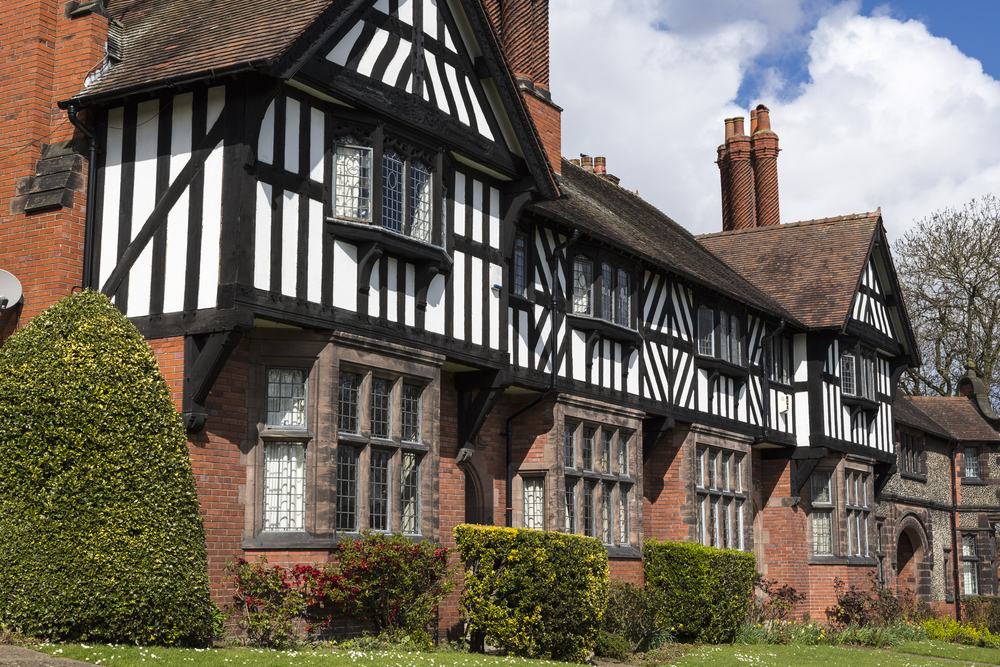From conditions of ownership, restrictions on development and all the Grades explained, Dave Sayce, co-founder of comparemymove.com, lists everything you need to know about buying and living in a listed property. What is a listed property? A listed property is a building, object or structure considered to be of national importance. They are included on […]
 From conditions of ownership, restrictions on development and all the Grades explained, Dave Sayce, co-founder of comparemymove.com, lists everything you need to know about buying and living in a listed property.
From conditions of ownership, restrictions on development and all the Grades explained, Dave Sayce, co-founder of comparemymove.com, lists everything you need to know about buying and living in a listed property.
What is a listed property?
A listed property is a building, object or structure considered to be of national importance. They are included on a special register, known as the List of Buildings of Special Architectural or Historic Interest.
If a property is listed, this registration covers the interior, exterior, and the immediate area surrounding the building.
Properties are given listed status to protect them from significant alterations that could damage their structure or appearance.
Grades explained
Listed properties are divided into categories to determine the impact or importance of a building as well as its structure and design.
Grade I: A building of exceptional historical and/or architectural significance. This grade only applies to 2.5% of listings, most of which are non-residential buildings.
Grade II*: These are particularly important buildings of special interest with historical and architectural significance. These make up approximately 5.5% of listed buildings.
Grade II: These are buildings of special interest and make up the vast majority of listings, including many residential and commercial buildings.
Who decides whether a building should be listed?
The secretary of state for culture, media and sport (currently John Whittingdale MP) is responsible for compiling the statutory List of Buildings of Special Architecture or Historic Interest, and anyone can apply to have their building listed. However, to be eligible, a building has to be over 30-years-old.
Is my building listed?
In general, most buildings built before 1840 are listed. If you aren’t sure if your new home is categorised as a listed building, contact your local authority’s planning department or go to your local reference library to access the database for your area. Alternatively, you can use the Listed Building Title Search to carry out a manual search online.
Important considerations to make when buying a listed building
If you decide to purchase a listed building, your new home will have a unique cultural and historical significance, interesting architecture and is likely to retain its value well.
However, despite the cultural and aesthetic benefits of a listed property, there are a number of considerations you need to make, particularly if you want to make any alterations or renovations to the building. Official consent is required if you want to make any domestic or structural changes, and you can get issued with a ‘repairs notice’ at any time, which requires you to undergo restoration work at your own cost. While some grants are available to assist with the financial burden of maintaining a listed property, not every case is eligible and restorative work often requires specialist tradesmen to carry it out.
Making changes and getting consent
If you want to alter your listed property in any way that could impact its structure and appearance, you need to obtain Listed Building Consent. It is very important to receive official approval beforehand, as making changes to a listed building without prior consent is a criminal offence and could leave you liable to prosecution. You will need to contact your local planning authority for consent .
What to look out for before you buy a listed building
If you’ve found a listed property that you’re interested in purchasing, there are a few essential checks and considerations to make before you place an offer.
Check for any previous unauthorised work that was carried out by the existing owners. There’s always a risk that previous renovation or alterations were carried out without prior consent or planning permission. If this is the case, you will be held responsible for all unregistered work as soon as the papers are signed in your name.
Can you keep on top of necessary renovations?
When you own a listed property, you have a responsibility to ensure the building is properly looked after and its key structural features and characteristics are preserved. Under section 115 of the Town and Country Planning Act 1971, your local authority can issue you with a ‘repairs notice’ at any time.
Are you happy to live by the conditions imposed on a listed property?
This means you can’t make any structural changes without prior permission, and any renovations you do make are likely to require a specialist tradesman to carry out the work.
Can you afford the insurance?
Home insurance is based on a building’s rebuild cost. You will have to get specialist cover for a listed building because many will have been built using uncommon techniques and materials. As a result they tend to have a greater rebuild cost, making them more expensive to insure. Seek help from an accredited surveyor to see which type of insurance you need.














